Digital Poster
Bioeffect, Magnetic Field & System Imperfections
ISMRM & ISMRT Annual Meeting & Exhibition • 10-15 May 2025 • Honolulu, Hawai'i

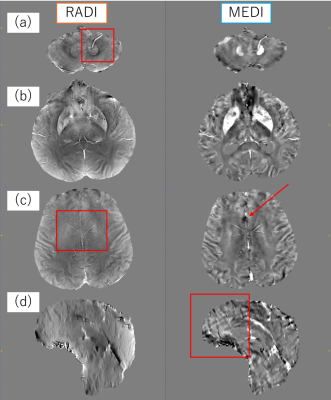 |
Computer Number: 145
3800. Radial
Approach for Dipole Inversion (RADI): A deep learning-based 2D
approach to quantitative susceptibility mapping
T. Wataya, S. Fuchibe, H. Takahashi, H. Kato, M. Hori, S.
Kido, N. Tomiyama, Y. Watanabe
Shiga University of Medical Science, Otsu, Japan
Impact: We propose a 2D deep learning-based approach to
the dipole inversion in QSM called “Radial Approach for
Dipole Inversion (RADI)”. RADI can accelerate the
calculation process of QSM and reduce artifacts that appear
in conventional methods.
|
|
 |
Computer Number: 146
3801. Electromagnetic
Halbach Cylinder to Investigate Magnetic Field Effects on
Cellular Metabolism
D. Bowen, O. Benavides, A. Walsh, M. McDougall
Texas A&M University, College Station, United States
Impact:
The electromagnetic Halbach array produces a controllable and homogeneous field orthogonal to a fluorescent light source, allowing for further investigation of magnetic field effects on cellular metabolism. |
|
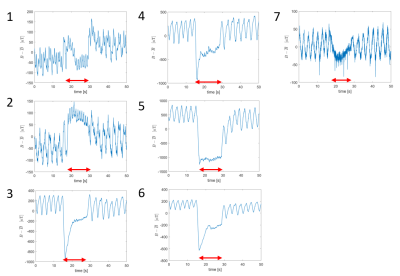 |
Computer Number: 147
3802. Investigation
of optimal NMR-on-a-chip sensor positions for monitoring
physiological magnetic field changes
F. Bschorr, T. Hüfken, T. Lobmeyer, F. Dreyer, J. Schüle, J.
Zhao, J. Anders, V. Rasche
Ulm University Medical Center, Ulm, Germany
Impact:
In this work, different locations for contactless sensing of physiological motion with a NMR-on-a-chip sensor around the torso were investigated. It is shown that both contributions might be separated with either bandpass filtering or principal component analysis. |
|
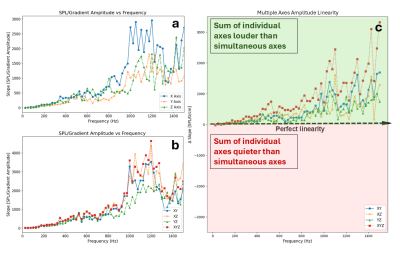 |
Computer Number: 148
3803. Evaluating
and Predicting Non-linear Acoustics Using Multi-Axis Gradient
Variations and Convolutional Neural Networks
B. Jolicoeur, A. Alexander, S. Kecskemeti, K. Johnson
Univeristy of Wisconsin-Madison, Madison, United States
Impact: This study challenges existing linear acoustic
models in MRI, offering a more complex and accurate
understanding of SPL dynamics. With improved acoustic noise
estimation, more informed choices can be made when
developing pulse sequences with reduced SPL.
|
|
 |
Computer Number: 149
3804. Validity
of Transfer Function (TF) Model for Partial in Partial out
(PIPO) Device under Different MR Radio Frequencies
Z. Zuo, M. Z. Islam, J. Zheng, H. Jeong, A. Kumar, J. Chen
University of Houston, Houston, United States
Impact: The reliability of TF method characterization of
PIPO devices is confirmed for frequencies below 128 MHz (3T)
and TF method becomes error-proned at very high field MRI
frequencies.
|
|
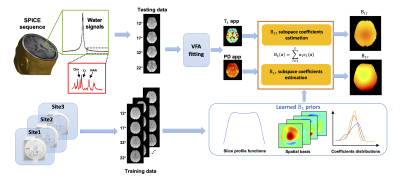 |
Computer Number: 150
3805. B1
Correction for MRSI using Unified Subspace Model for
Multi-Center Study
Z. Meng, Y. Zhao, C. Xu, Y. Li, W. Jin, B. Bo, Y. Tang, W.
Tang, T. Wang, Z-P Liang, Y. Li
Shanghai Jiao Tong University, Shanghai, China
Impact: The proposed $$$B_{1}$$$ correction method will
enhance the quantitative accuracy of metabolite measurements
and thus enhance the robustness and practical usefulness of
MRSI in clinical applications.
|
|
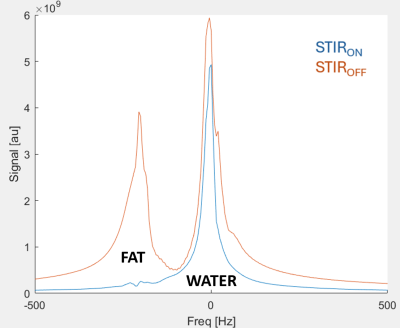 |
Computer Number: 151
3806. METHOD
for CENTER FREQUENCY CALIBRATION USING STIR ON/OFF SPECTRA
A. Wheaton
Canon Medical Research USA, Mayfield Heights, United States
Impact: Accurate and consistent center frequency
calibration is critical for reliable image quality. The
proposed method is robust to a wide range of clinical
conditions and anatomies, including tissues with high
off-resonance (e.g. cervical spine) or high fat content
(e.g. breast).
|
|
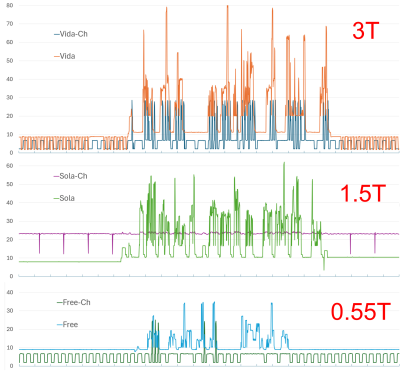 |
Computer Number: 152
3807. Energy
Consumption of MRI Systems: An Evaluation of the Relative
Contribution of Chillers
A. Martin, S. Dai, P. Su, A. Becker, V. Deshpande, S.
Gruebel, C. Hess, S. Woolen
UCSF, San Francisco, United States
Impact: Energy consumption by MRI systems is an
important contributor to the carbon footprint of health
care. A clear understanding of the relative contribution
that system cooling plays will help develop impactful ways
to improve MRI energy efficiency.
|
|
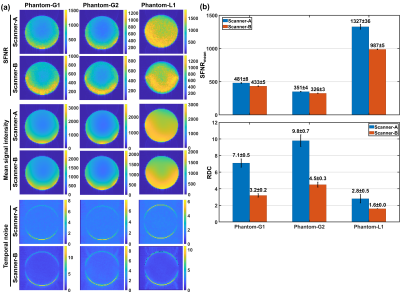 |
Computer Number: 153
3808. Towards
Establishing Comparability in Scanner Stability Measurements for
Quality Assurance
Q. Chen, N. Wehkamp, C. Wan, P. Hucker, M. Büchert, S.
Littin, J-F Nielsen, M. Zaitsev
Division of Medical Physics, Department of Radiology, University Medical Center Freiburg, Faculty of Medicine, University of Freiburg, Freiburg, Germany
Impact: This work underscores the importance of
controlling various factors in scanner stability
measurements to ensure comparability for quality assurance,
particularly in longitudinal, cross-vendor, multi-center
fMRI studies. Furthermore, we provide practical
recommendations for establishing standardized quality
assurance protocols.
|
|
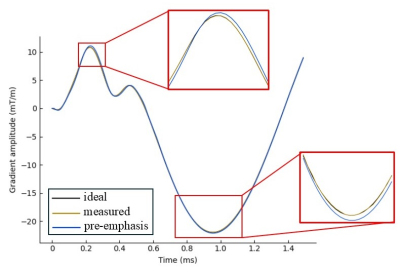 |
Computer Number: 154
3809. Gradient
Waveform Pre-emphasis using Deep Neural Network
G. Dan, Z. Zhong, Q. Liu, J. Xu
United Imaging Healthcare North America, Houston, United States
Impact: This method enhances MRI image quality by
reducing artifacts and improving spatial accuracy through
gradient waveform pre-emphasis using deep learning.
|
|
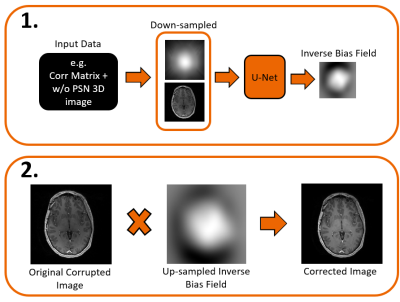 |
Computer Number: 155
3810. Improved
bias field correction by combining Deep Learning and pre-scan
information
T. Krieg, W. Liu, P. Liebig, D. Grodzki, L. Pfaff, A. Maier,
T. Hülnhagen
Friedrich-Alexander-Universität Erlangen-Nürnberg, Erlangen, Germany
Impact: This research addresses MRI intensity
inhomogeneity issues by combining deep learning models and
additional context information. The approach improves image
quality and holds the promise to enhance bias field
correction and potentially reduce diagnostic errors with
minimal processing overhead.
|
|
 |
Computer Number: 156
3811. Geometric
Fidelity of a Head-Specific 0.5T MR System: An Inter-Scanner
Reproducibility Study
C. Wiens, C. Harris, J. Marduhaev, I. Connell
Synaptive Medical, Toronto, Canada
Impact: This study’s impact consists of characterizing
the geometric fidelity of a head-specific, small-footprint
MRI system and assessing its variance across multiple sites.
|
|
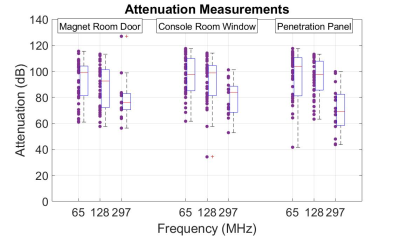 |
Computer Number: 157
3812. Real-world
Performance of Clinical MRI Faraday Cages
J. Small, D. Price, J. Martin, A. Wright, A. Price, J.
Ansell, E. Stamou, A. Kruezi, S. Shah, C. O'Brien, H.
Rogers, F. Padormo, G. Charles-Edwards
Guy's & St. Thomas' NHS Foundation Trust, London, United Kingdom
Impact: This work shows that having an independent check
of RF cage performance after scanner installation can be
helpful if Faraday cage attenuation has been reduced during
the installation process.
|
|
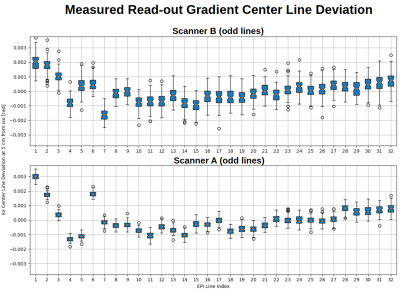 |
Computer Number: 158
3813. EPI
gradient trajectory noise measurement and simulation of related
artifacts
N. Wehkamp, Q. Chen, P. Hucker, J. Fischer, S. Littin, J-F
Nielsen, M. Zaitsev
University Medical Center Freiburg, Freiburg, Germany
Impact: Enhance understanding of gradient related
artifact sources in fMRI neuroimaging studies. Our
open-source simulation routine allows to partially reproduce
artifacts from dynamic zero and first-order trajectory
deviations. The improved understanding lays the groundwork
for development of more reliable future MRI-systems.
|
The International Society for Magnetic Resonance in Medicine is accredited by the Accreditation Council for Continuing Medical Education to provide continuing medical education for physicians.